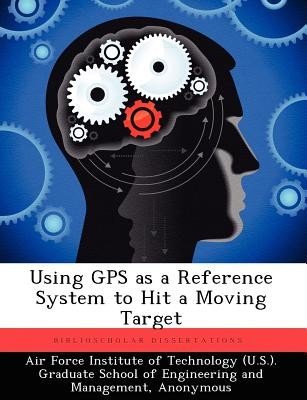
- We will send in 10–14 business days.
- Author: Daryl J Burnette
- Publisher: BiblioScholar
- ISBN-10: 1249450896
- ISBN-13: 9781249450894
- Format: 18.9 x 24.6 x 0.8 cm, softcover
- Language: English
- SAVE -10% with code: EXTRA
Using GPS as a Reference System to Hit a Moving Target (e-book) (used book) | bookbook.eu
Reviews
Description
The Affordable Moving Surface Target Engagement (AMSTE) project attempts to develop affordable solutions to the precise moving target surface target engagement problem. Up to this point, most of the error analysis performed for the AMSTE project has been at the error variance level, generating root-sum-square (RSS) total errors from error budgets consisting of constant error variances. In reality, the level of error for both Global Positioning System (GPS) positioning and radar targeting systems is highly dependent upon the given situation (such as the distance between sensor and target, the altitude differences, etc.) This research generates a more comprehensive model of the GPS errors based upon the underlying physics of the situation. It focuses on differential tropospheric errors and multipath, as these are the primary error source in a differential GPS targeting system. In addition to the error model development, a code-based differential GPS and differential ranging approach is implemented in simulation using a Kalman filter. This approach uses GPS measurements collected by each of the sensors and the weapon, and it uses ranging measurements from the sensors to the bomb and the target. Multiple cases are run varying 1) the number of GPS satellite measurements tracked by each receiver, 2) whether or not the common GPS errors are estimated, and 3) whether or not the bomb is tracked with the same radar sensors that are tracking the target. The horizontal DRMS position error during the terminal phase of the bomb trajectory drops from about 6 meters to about 3.5 meters.
EXTRA 10 % discount with code: EXTRA
The promotion ends in 17d.17:15:49
The discount code is valid when purchasing from 10 €. Discounts do not stack.
- Author: Daryl J Burnette
- Publisher: BiblioScholar
- ISBN-10: 1249450896
- ISBN-13: 9781249450894
- Format: 18.9 x 24.6 x 0.8 cm, softcover
- Language: English English
The Affordable Moving Surface Target Engagement (AMSTE) project attempts to develop affordable solutions to the precise moving target surface target engagement problem. Up to this point, most of the error analysis performed for the AMSTE project has been at the error variance level, generating root-sum-square (RSS) total errors from error budgets consisting of constant error variances. In reality, the level of error for both Global Positioning System (GPS) positioning and radar targeting systems is highly dependent upon the given situation (such as the distance between sensor and target, the altitude differences, etc.) This research generates a more comprehensive model of the GPS errors based upon the underlying physics of the situation. It focuses on differential tropospheric errors and multipath, as these are the primary error source in a differential GPS targeting system. In addition to the error model development, a code-based differential GPS and differential ranging approach is implemented in simulation using a Kalman filter. This approach uses GPS measurements collected by each of the sensors and the weapon, and it uses ranging measurements from the sensors to the bomb and the target. Multiple cases are run varying 1) the number of GPS satellite measurements tracked by each receiver, 2) whether or not the common GPS errors are estimated, and 3) whether or not the bomb is tracked with the same radar sensors that are tracking the target. The horizontal DRMS position error during the terminal phase of the bomb trajectory drops from about 6 meters to about 3.5 meters.


Reviews